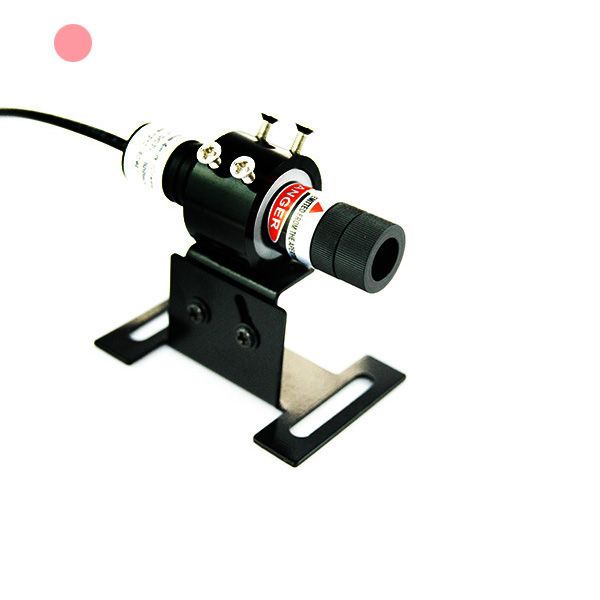
Comparing with any other visible laser devices, the usual use of a 980nm infrared laser diode module gets much longer wavelength, thus it is always projecting invisible infrared laser beam and IR reference dot from beam aperture, and only allowing proper use as an accessory part of other scientific research used device or equipment. Being made with an import 980nm infrared laser diode and a qualified optic lens inside a durable anodized aluminum alloy housing tube, this 980nm infrared dot laser is working well with high density and high transmittance infrared laser light source emission and ultra compact size infrared reference dot projection within a long extending distance conveniently.
The real use of a 980nm infrared dot laser alignment applies an AC/DC adapter as its electric power source. Owing to its acceptation of wide range electric current of 100V to 240V, this night version used laser device is also applied for a lot of working environments. Being made with an import semiconductor IR laser diode and a qualified glass coated lens, it is not only projecting high density and high photoelectric ability infrared laser light source at long extending distance, but also maintains ultra small laser beam divergence of less than 2mrad. Whatever kind of working surface it is pointing, this long wavelength 980nm infrared dot laser can get highly uniform IR laser dot projection with micron level spatial positioning and meet the precise control requirements of energy or signals in experiments, such as the operation of single cells or nanoscale materials.
When 980nm infrared laser diode module is integrated with experimental equipment such as microscopes, spectrometers, optical platforms etc, there is no complex optical path debugging. It keeps work with high penetration IR laser light source generation into biological tissues and certain polymer materials, which is not easily absorbed by most substances. It is suitable for experimental scenarios that require “non-invasive” or “low damage”. During long term lasting infrared alignment laser dot projection work, the uniquely designed APC, ACC driving circuit board has just protected itself from overheating and over current impact, and ensures long serving lifetime of more than 8,000 hours in proper use. It can greatly maintain low performance attenuation, the repeatability and reliability of experimental data (such as long-term monitoring of the light response changes of samples). owing to its invisible infrared laser light source emission to human eye, it will not cause stray light interference to the signal acquisition of optical detectors (such as infrared cameras and spectrometers). It is especially suitable for experiments with high sensitivity requirements for optical signals.
Main applications in scientific research
Biomedical research: As an auxiliary or direct light source for fluorescence excitation light source, it is used for cell imaging, tissue section analysis, etc. For example, in near-infrared imaging, 980nm infrared dot laser alignment can penetrate deeper biological tissues (reduce scattering and absorption), and cooperate with fluorescent probes to achieve observation of deep structures or molecular activities in living small animals; it can also be used for basic research on photothermal therapy, and selective heating of local cells can be achieved through precise focusing.
Material science experiments: In experiments such as nanomaterial preparation and thin film growth, 980nm infrared alignment laser is used as a precise energy source to regulate material synthesis conditions. For example, the high energy density of its point-shaped light spot is used to induce the directional assembly of nanoparticles in a vacuum environment, or to perform local annealing on semiconductor films to study the relationship between material structure and performance.
Spectroscopic analysis: used as excitation light in experiments such as Raman spectroscopy and infrared spectroscopy to stimulate the vibration or rotation energy level transition of sample molecules and assist in analyzing the chemical composition and molecular structure of materials. It is especially suitable for samples that are sensitive to visible light (such as some organic dyes) to avoid sample damage or signal interference caused by visible light excitation.
Optical system calibration: In the research and development of optical equipment such as lidar and telescopes, 980nm infrared laser is used as a reference light source to calibrate the coaxiality, focal length or aberration of optical components to ensure the measurement accuracy of the equipment.
